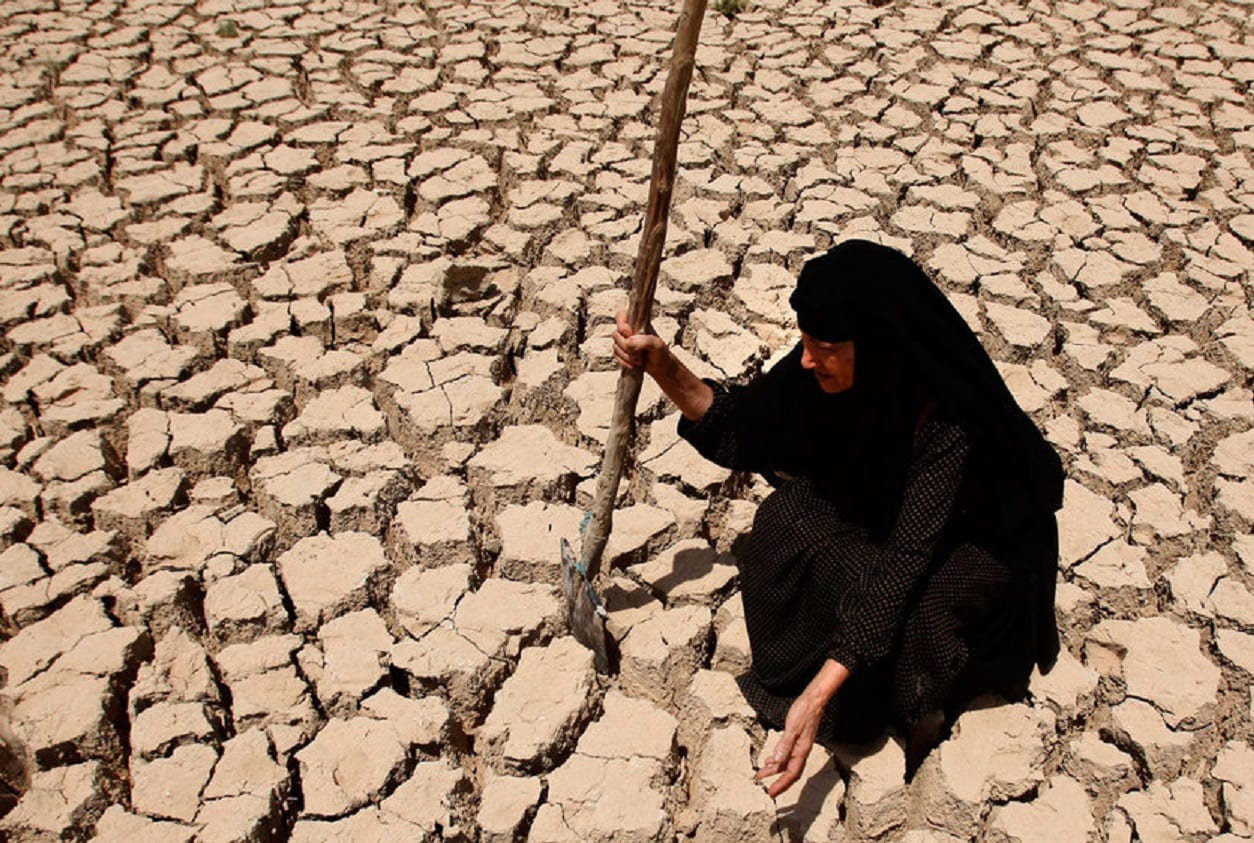Last year, severe droughts and prolonged water mismanagement catalyzed deadly protests in the Islamic Republic of Iran. The demonstrations erupted in the central city of Isfahan, where thousands of farmers were facing dry farms that threatened their livelihoods.
Controlling Water in Iran, the Middle East
For years, the Iranian government spearheaded dam construction efforts throughout the country to generate electricity and manipulate water routes. Farmers and other agricultural workers felt the brunt of these projects as they received smaller and smaller allocations of water. While these demonstrations shone a light on Iran’s water shortages, this crisis has been ongoing for years. For at least a decade, frequent droughts, groundwater depletion, and vanishing water sources plagued the country.
Iran is not the only country in the Middle East that faces natural resource limitations. Many of its Arab neighbors are “water-stressed,” and have relied on technology and state-run projects to rectify ongoing water shortages. Following the 1979 Revolution, Iran’s leadership turned to the construction of dams to solve the persistent water problem. By the late 1980’s Tehran became the third-largest dam builder in the world after China and Japan. While dams provide short-term advantages, Iran’s government went overboard with its efforts. Ultimately, too many damns were crafted in poor locations, displacing many civilians and damaging ecosystems.
Over the last few years, the BBC reported many of the dams in Iran appeared to be running low. Some protestors called for the remaining water supplies in the dams to be directed toward agricultural workers in the regions below them.
Water for Energy
The construction of hydroelectric dams has also worsened the water crisis in Iran. As water collects in these reservoirs, it eventually evaporates due to extremely hot temperatures. The country’s largest hydro-dams are on Khuzestan’s Kuran river. While the government has re-allocated some of the water supplies in these dams to struggling regions in the country, other areas are left completely dry.
According to an Iranian hydrologist, “There is no comprehensive nationwide water management plan, or inter-agency coordination, although there is a lot of talk about the need to have them.”
In addition to the government’s misuse of resources, laws enable the over-extraction and manipulation of water sources in Iran. Landowners, after receiving a permit, can legally extract any amount of water. According to the managing director of Iran Water Resources Management Company, approximately 320,000 illegal wells exist throughout the country.
Climate change is also contributing to Iran’s growing resource problem. As temperatures become hotter and drier, Iran’s water crisis will exacerbate. In 2021, several months represented the driest periods in Iran since the early 1980s. As Iran’s water shortage has ballooned into a national crisis, more civilians are becoming frustrated with their government’s lack of action. In the 2021 protests that swept the country, Iranian security forces cracked down on demonstrators. As temperatures continue to rise and farmland dries up, more protests will likely rock the country.
Iran will not be the only Middle Eastern country to face a long-term water crisis. A report released by the Carnegie Endowment this year projected that the region will be the first to “effectively run out of water” down the line.
Maya Carlin is a Middle East Defense Editor with 19FortyFive. She is also an analyst with the Center for Security Policy and a former Anna Sobol Levy Fellow at IDC Herzliya in Israel. She has by-lines in many publications, including The National Interest, Jerusalem Post, and Times of Israel.

